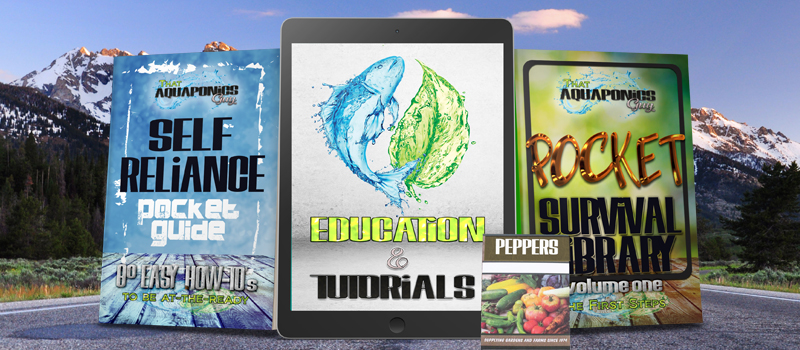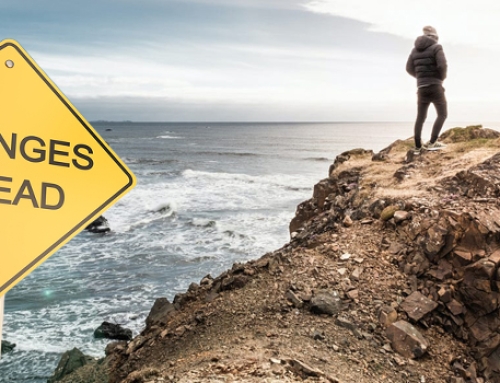A Primer for our Survival Library Volumes
We have rolled out for you as inexpensively as we can the knowledge, tutorials, and lists you will need to become, or maintain your self-sufficiency. We have the first two books from ThatAquaponicsGuy “ThePocket Survival Library Volume One: The First Steps” and “The Self Reliance Pocket Guide: 80 Easy How-To’s”
You can find BOTH by clicking right here now
We wanted to give you a proverbial taste of what you would find in both of those books for that very low price! Here are the Top 10
1. There are many times when trouble strikes and we have to deal with only what we have on our person and in our pockets. A Bug-Out Bag is a luxury that might not be with us when the unexpected comes along, so I like to make sure I have a minimum of things on me before I leave the house even for a trip to the grocery. An EDC or Every Day Carry kit:
Here’s what I carry, you’ll have to adjust for your own needs:
1) A small pocket knife
2) A multi-tool
3) A cigarette lighter or fire starter
4) A black sharpie
5) A small bottle of hand sanitizer
6) Wallet with emergency cash and id cards
7) Keys, with a small flashlight on a keychain
I can carry all of that in jeans or short pockets no problem, and it’s amazing how handy I find each of those items to be in day-to-day activities. In an emergency, they could really make a difference.
2. The most important thing to have in a disaster situation is water. The ten-minute thing I did was to buy extensions for the gutter down spout. Get the leak-proof containers that you can put water in and use it after you filter it for drinking.
3. Check your food supplies and rotate them out as the expiration date comes due. Stock the foods you like, because if you don’t like a certain food, you won’t eat it.
4. Here’s a tip for starting fires in a crisis; save all of your dryer lint in a zip food bag. Squeeze it down, roll it up and place it in your bug out kit.
5. My very first self-sustenance project was getting a plastic tote box ready for my family’s main vehicle. Then went by each family member, and assisted them in building their totes for their cars. This will be able to help when this very good vehicle emergency box is needed.
6. Every three-month action to take is to rotate my stored prescription meds. I have two weeks in my Bug-Out Bag, additional 3 days in my 72-hour kit, 3 days in my car kit, and 3 days in my comprehensive medical kit.
7. Rinse out used soda bottles and fill them with water. Save them for when the water is turned off or long term storage.
8. Dip cotton balls in petroleum jelly and put them in a baggie or small plastic container (recycle old pill bottles) for your Bug-Out Bag. These make great fire starters and they burn long and hot.
9. Batteries! Nothing worse than needing some and not having them or the right type. Make sure you are well stocked in the batteries that you use the most.
10. Be gathering/purchasing/using the things that you would be or will be using when a catastrophe hits you and your family. That goes for the food that you save and store, to the cooking methods (beyond electricity) that you will utilize, as well as the many other pieces of equipment or tools that are at the ready for you. Remember practice, does NOT make perfect… It makes it permanent. Work out your muscle memory as well as your “mind” memory as well.
Okay… I can’t resist in putting more in this article than I planned to… here are 15 more tips that you should learn, know, have around and do.
11. Never be without toilet paper. Put 4 rolls in 2 gallon Ziplocs and put 1 bag in each car, one in the garage, one under each sink in the house. That way, regardless of what disaster occurs – TP will be there.
12. Buy a large bottle of 5 to 10-percent iodine solution and transfer it into those small, handy travel spray containers. Put one in each first aid kit in each bug-out bag. Besides being a disinfectant and medical treatment of cuts, a few drops per liter will purify water as well as keep thyroid function humming along in the absence of iodized salt.
13. A great Self Reliance tip I have is to buy extra lumber, fasteners, nails, whenever you have a DIY project, and save the extra in your new “Mini-Lumberyard”!
14. Carry a small bottle of iodine and a small bottle of bleach with you in your Bug-Out Bag in the event you have to drink questionable water in your travels. Just add a bit to your canteen, shake it and let it be for a while and you are good to go. They have iodine pills but, the taste can be nasty, this way you can actually drink down what you have purified.
15. Weigh your BugOut Bag. Put it on and carry it around the house. How long can you go without stopping? If it is too heavy which it is likely to be, here are a couple of things that you might consider doing: This way depending on how many people may be with you when you actually need to pack the Bug-Out Bag you can distribute the weight among everyone.
16. I think a very good use of time is to get your choice of weapon that you will use for home protection. AND go to the firing range to get used to how it works and feels in your hands. You need to be able to have that at a moment’s notice and be proficient with it, so start today.
17. Keep a running inventory of ammunition so you keep a good assortment on hand and track what you use. A little extra can be good for barter.
18. Most of us have items that use batteries. Flashlights, radios, etc. Quarterly, I grab the rotation list and swap out old batteries for new. The batteries I take out of my prep kit are usually still good, so I put them into use in normal, everyday equipment. It takes almost no time and makes sure I have good batteries everywhere I need them, not just my prep kit.
19. Every time I go to the grocery store, I add an extra $20 of items for my food storage.
20. Make a small fishing kit, cheap and easy. Take a small tin (preferably a medium-sized round candy mint tin). Add a fishing line, hooks, sinkers, small artificial bait, and a couple of snubbers. (A snubber is a piece of surgical tubing with a fishing line going down the center and clasps on each end to tie your fishing line to. You can pick this up at most any store that sells fishing gear).
A branch will not have the same flexibility as a fishing pole. Tie your fishing line to the end of your flexible branch (the length of the line will be determined by your situation). Tie the other end to your snubber. On the other end of your snubber tie your leader (about 18″ to 24″ of fishing line) then tie on your hook. Add your sinker to the fishing line on the pole/branch side of the snubber about 12″ from the snubber. Add bait and you are set.
21. Get a caravan size chemical toilet and some Elsan Blue or Eco Green fluid as well for when there’s no sanitation or main water to flush the loo. This is one essential that is often overlooked.
22. Unless your home is 100% all electric appliances (even with your water heater and furnace), get a carbon monoxide alarm if you don’t already have one. And even then it’s not a bad idea as in an emergency you may want to use a propane device, and it’ll hopefully keep you from dying from the CO.
23. GMRS/FRS radio. Regular CBs can become clogged with radio traffic. A good brand can also provide encryption so you can have a private discussion with family. Depending on the make and model, it may come with frequencies that require a license. In emergencies, I doubt the FCC will chase you down. And in regular times, I doubt they will chase you down if you’re not being obnoxious.
24. In addition to a flash drive, open a free “cloud” service account, many of which will give you 5-10 gigabytes of storage. An alternative to that would be to open up a new e-mail account, on Yahoo/Gmail/etc, and e-mail the documents to yourself. Unsure of what to make for a new username for an e-mail account? Take your first name + “documents” (i.e. “BillDocuments”), and use your last name as the password.
This way, if your house (and flash drive) are lost in a tornado/earthquake/fire/etc, you can still access those documents from, say, a public library computer.
25. Another tip along with freezing jugs with water to place in the freezer, is to fill a 2-liter bottle about 1/3 full. Freeze it upright, then lay it on its side. If you come home from vacation, and the water is frozen at the bottom (sideways) in the bottle then the power was off long enough that the food may have spoiled.
THE OVERALL TAKEAWAY
We at ThatAquaponicsGuy are always looking to assist you in having the confidence to grow your own food, have that food ready for you when you need it, among many other self-sustaining activities. We have this first two-book combination as our first foray into bringing you that education, the tutorials, and that library that you can rely on in the easy and hard times.






